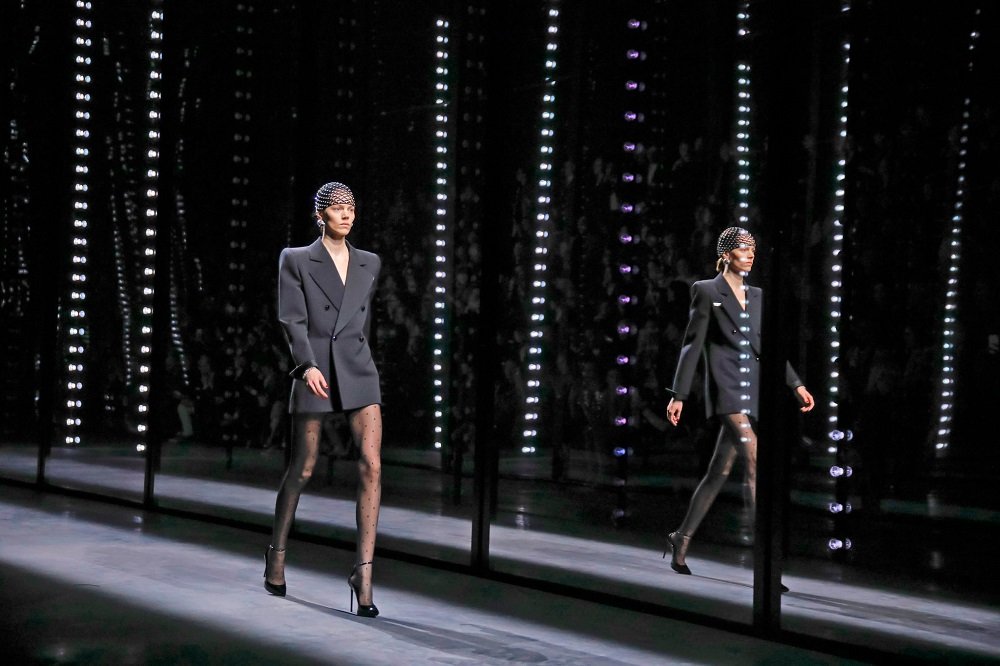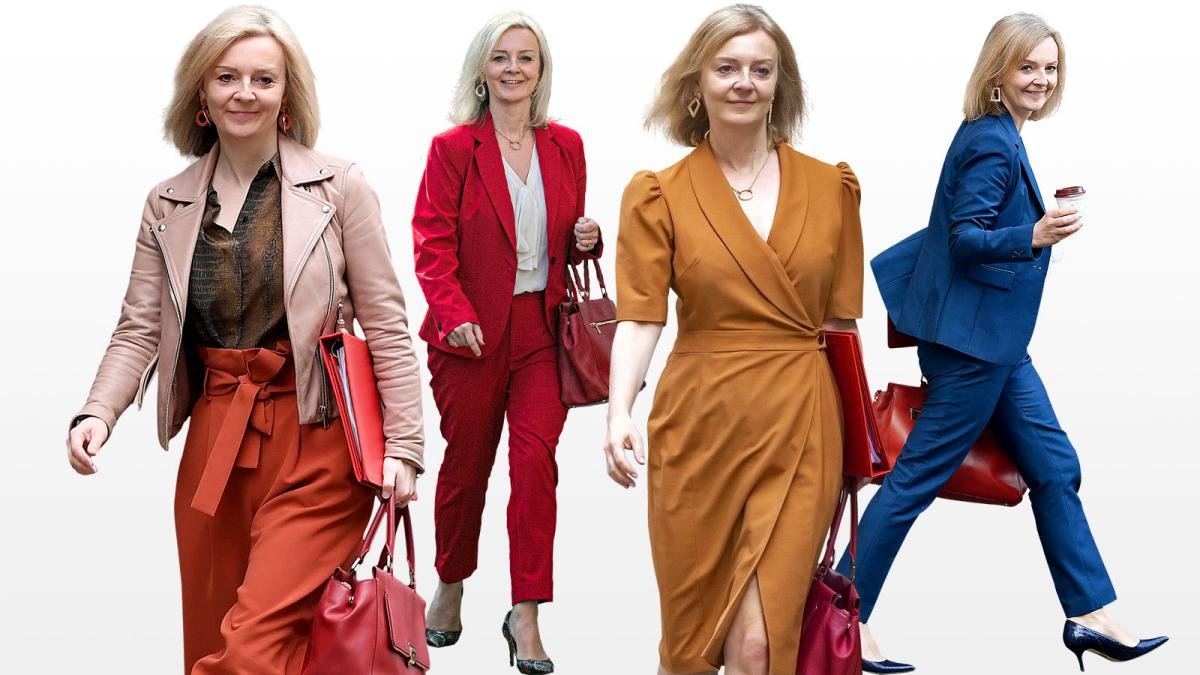Powerful Dressing – Authority or Helplessness?
Creating a powerful image through clothing is a common practice. However, adopting the style of “powerful dressing” may lead to some challenges.
*Powerful dressing*, roughly translated as “dressing for power,” signifies a fashion style that allows the wearer to exude confidence and pride. Choosing outfits that make you feel better about yourself, improve your mood, and convey a positive image to those around you is the essence of this style. Numerous studies have shown that what you wear can influence your behavior and attitudes, so the combination of “powerful dressing” and confident gestures can significantly impact your personal success.
The History of “Clothing” and “Power”
The association of clothing with power dates back to ancient times when garments helped distinguish various social classes. In ancient Egypt, the attire of pharaohs and high-ranking officials was lavish, made from precious materials, symbolizing prosperity and power. Similarly, in ancient Rome, emperors would don richly red togas to assert their status and authority.
Throughout the medieval period, clothing continued to symbolize influence. The royalty and nobility adorned themselves with intricate garments decorated with precious gems and high-quality fabrics. Knights and warriors wore armor and protective clothing, showcasing strength and courage.

There is always clothing that expresses power | Source: Women Fashion
During the Renaissance, clothing played an even more crucial role as the emerging upper middle class began to appear, and people began viewing fashion as a means to express themselves. Clothing became a tool to convey artistic and cultural values.
With the rise of modern fashion in the 20th century, clothing became a potent means of expressing individuality and power. Fashion underwent various transformations, moving towards more diverse styles. In the 1980s, the “powerful dressing” style emerged, emphasizing specially designed suits and details that exuded authority and confidence in the workplace.

Women have historically worn men’s-style clothing to express ‘power’ | Source: NPR
Today, “powerful dressing” continues to be an integral part of fashion and personal style. Many people choose outfits that help them express their individuality and enhance their self-confidence. From Parisian runways to the streets of New York, clothing remains a significant symbol of strength, authority, and a means for individuals to showcase themselves.
Understanding “Powerful Dressing” in the Current Context
Firstly, let’s reassess the importance of cultivating a “powerful” personal image. Dressing professionally instills confidence when heading to the office, attending job interviews, or participating in crucial meetings. However, the rise of “work-from-home” has ushered in a more relaxed approach to clothing choices. Quynh Nhu (30 years old, working in Singapore) mentioned that she no longer feels the need to appear “powerful” in her attire since transitioning to online work. Nevertheless, she emphasized the importance of choosing suitable attire for Zoom meetings to maintain a sense of professionalism.

Power dressing has undergone many changes to stay current | Source: Elle
The landscape of using “powerful dressing” has somewhat shifted. Nowadays, with the popularity of career-oriented content online, many individuals mold their “professional image” solely through a camera and LED lights. On the internet, they don outfits that project a “CEO” vibe, making it easier to sell courses.

‘Powerful dressing’ can create a conflict between image-building and personal capabilities | Source: NYT
However, “powerful dressing” can blindside people, leading them to purchase low-quality courses and products based on an impressive appearance. It becomes challenging to verify whether someone’s demeanor truly aligns with their polished exterior.
Another perspective that needs reevaluation is the notion that appearing powerful equates to dressing rigidly, forcefully, or excessively masculine. In a brief survey, 4 out of 5 female respondents believed that dressing powerfully required wearing vests, dark-colored clothing, and styling their hair in a bun.

Do men face challenges in expressing power through clothing? | Source: Ties
For men, there’s an ingrained assumption that they appear more powerful in suits. However, in reality, women’s fashion includes neatly tailored, feminine garments that contribute to a professional demeanor. Examples include skirt suits, jackets, knitted dresses, or the use of accessories and watches.
Power or Powerlessness?
Undeniably, there are benefits to adopting a powerful dressing style, as it boosts confidence and strength. However, there are hidden “red flags” that warrant consideration.
Firstly, a downside to maintaining a constantly powerful appearance is the pressure to uphold a specific image. Certain industries still demand a professional appearance, and shedding this pressure remains challenging.

Many people encounter obstacles when expressing power through clothing | Source: Inventing Anna
Moreover, the societal expectation and standard regarding “powerful dressing” can perpetuate biases and discrimination. The pressure to conform to beauty standards and specific dressing rules may lead individuals who don’t fit these criteria to be marginalized.

Women are often scrutinized more for their clothing and the message it conveys than men. Pictured is UK Prime Minister Liz Truss | Source: The Times
When it comes to “powerful dressing,” gender remains a controversial issue. A notable case is the scrutiny faced by Liz Truss, the Prime Minister of the UK in 2022. In her 44-day term, Truss faced constant attention and criticism for her clothing choices, whereas her predecessor, Boris Johnson, often appeared with disheveled hair and mismatched clothes without much controversy. The double standards persist, adding weight to the struggles women face in terms of fashion and societal expectations.
In response to Vogue, former UK Prime Minister Theresa May shared her fashion choices that drew public attention: “Throughout my political career, people have commented on what I wear. But that hasn’t stopped me going out and enjoying fashion. And I also think it’s important to be able to show that a woman can do a job like this (Prime Minister) and still care about clothes.”
Comfort is the New “Power”
In the realm of powerful dressing, comfort ultimately remains paramount. While traditional power dressing may include menswear, shirts, vests, it won’t exude the desired aura of confidence if you feel constricted and burdened. If possible, seek comfort in your attire before imbuing them with various messages.

Power is not only expressed through what you wear. In your opinion, does Anna Wintour exude power in a floral dress? | Source: Thedailybeast
You can also redefine “powerful dressing” in entirely new ways. According to Helen Lambert, CEO of The Style Pulse, contemporary “power” is expressed through clothing that allows free movement and boasts durable materials. Comfortable button-up dresses can replace formal outfits with ties and vests. Wide-leg jeans, cozy sweaters, and athleisure wear are gaining prominence.

Comfort will make you confident and exude an attractive aura, regardless of what you’re wearing | Source: Fashionista
In summary, clothing is a tool to express yourself. You don’t have to pigeonhole yourself into any image or force yourself to appear “powerful.” As long as we know how to wear a confident attitude, even jeans and a T-shirt can become a form of “powerful dressing.”


